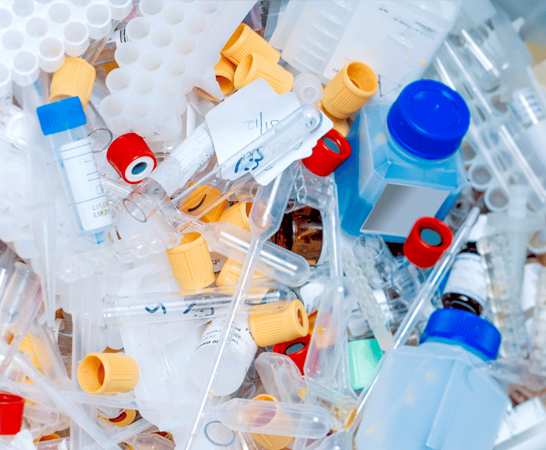
A small-scale study at one peritoneal dialysis unit has yielded hefty results. The effort to quantify plastic waste associated with home-based peritoneal dialysis reveals that therapy for a single patient generates 21.4 kilograms of recyclable polypropylene plastic (PP) and 81.4 kg of recyclable polyvinyl chloride (PVC) plastic annually. Across BC, this amounts to an estimated 24,503 kg of PP and 92,069 kg of PVC plastic waste each year.
“It’s a really staggering amount,” says Dr. Caroline Stigant, a nephrologist at Island Health’s Royal Jubilee Hospital in Victoria, who is a co-author on the study. “The polypropylene is the thin plastic covering that you peel away and it’s very light. You would think that maybe just a couple of kilograms are used each year – but across Canada it really adds up.”
The results of this study help set the stage for future recycling strategies. Stigant notes recyclers rely on a business model and are interested in a steady supply of product. The new data identify a steady source and may help inform future plastics recycling programs in BC and even across Canada.
In their paper in Kidney International Reports, the team also assessed what amount of carbon emissions could be spared if this plastic waste was recycled, instead of dumped at a landfill where it would slowly decay and release carbon into the atmosphere. The combined results show, worldwide, annual recyclable PP and PVC waste from peritoneal dialysis estimated at 37.91 million kg; if recycled, this waste reduction would be equivalent to taking 8,153 vehicles off the road.
With waste from health care comprising about 5% of global greenhouse gas emissions, Stigant is encouraging health-care providers and policy-makers to also consider the full spectrum of our health-care system’s environmental impact.
"Carbon emissions are not the only metric we should be considering," she says. "Lifecycle assessment studies, currently underway for a range of kidney therapies in BC, will inform more broadly about an entire range of potential environmental impacts across the entire life cycle of a product or service. Perhaps with PVC (chlorinated plastics) disposal, for example, we should be considering impact on freshwater and marine environment systems. Ultimately, trade-offs will become evident."
Preventative measures to limit the incidence of kidney disease in the first place could go a long way in reducing emissions, she adds. This includes earlier identification of people at high risk of kidney disease, earlier preventative measures and interventions to slow disease progression, and therapies like transplantation for those who do experience end stage kidney disease, avoiding the need for dialysis.
“As lifestyles are changing and the planetary crisis evolves, we want to have low-impact care. We need to have discussions about how to dispose of our waste, but really we need to reduce the incidence of disease so that we aren’t dealing with this waste in the first place,” Stigant emphasizes.

